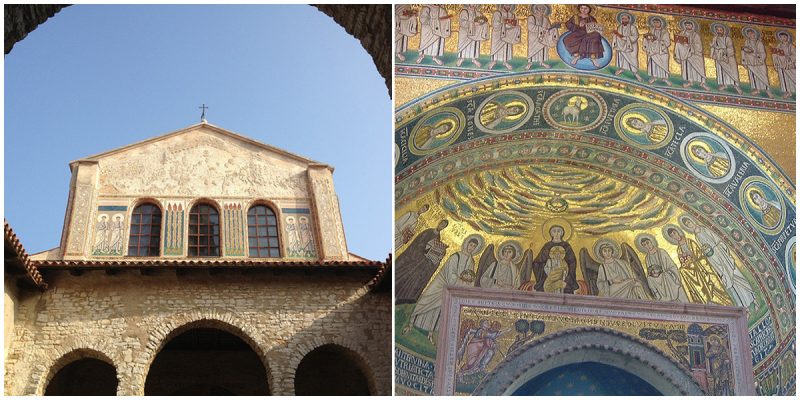The Euphrasian Basilica, or the Cathedral Basilica of the Assumption of Mary, is a sixth-century basilica in Porec, Croatia.
It is an excellent example of early Byzantine architecture that includes a sixth-century baptistery, a colonnaded atrium which was built after the basilica, and the sixth-century bell tower of the nearby archbishop’s palace.
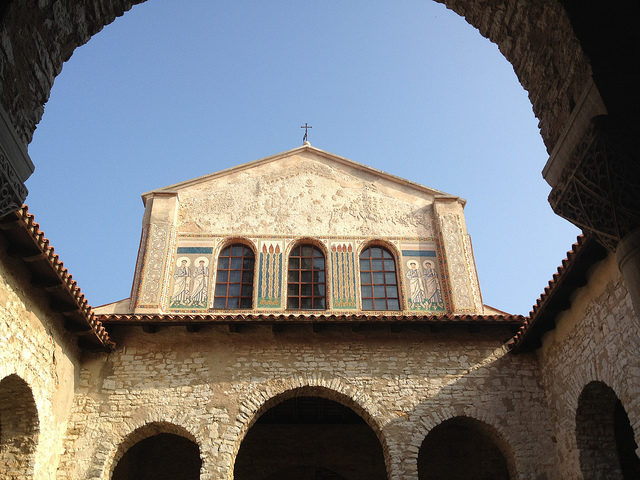
The highlight of the basilica is the great mosaic in the oratory which is designed with biblical scenes, Istrian martyrs, and archangels from the previous basilica from the fifth century. The representation of Christ with the apostles is the most impressive biblical scene.
The arch below contains mosaic medallions with the Lamb of God and portraits of twelve female martyrs.
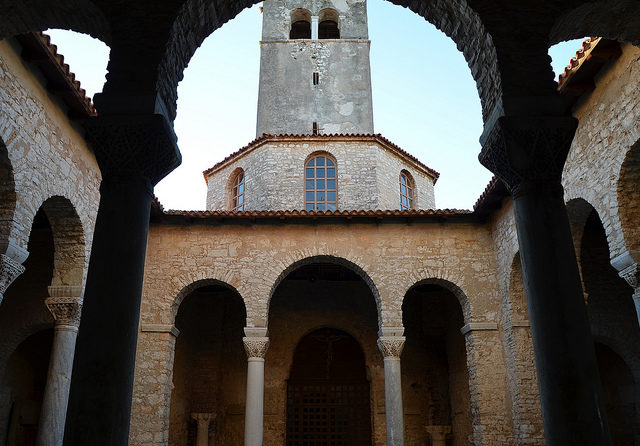
Dedicated to Saint Maurus of Parentium the previous basilica dates back to the second half of the 4th century.
The present basilica was built during the period of Bishop Euphrasius. It was dedicated to Mary and for the construction, parts of the former church were used and the marble blocks were imported from the coast of the Sea of Marmara.
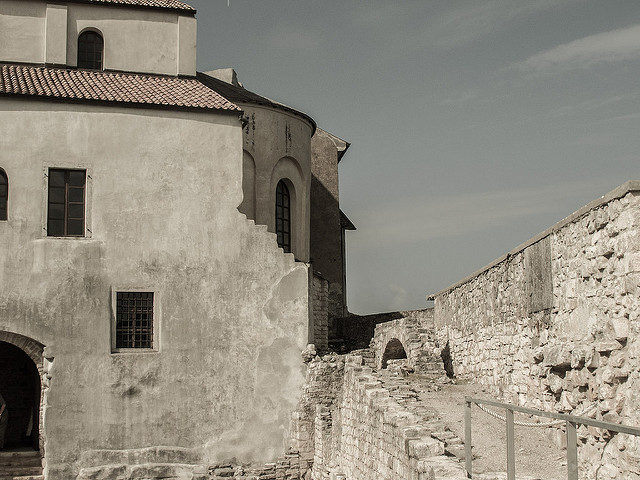
The construction of the mosaics took about ten years. There is the floor mosaic which was built by local experts and the wall mosaics which were executed by Byzantine masters.
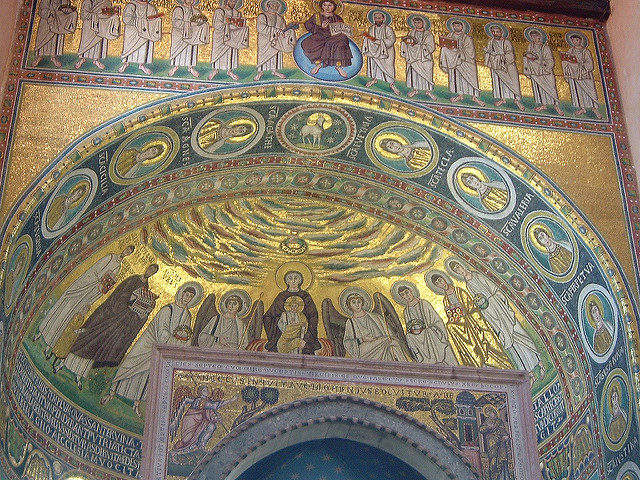
Bishop Euphrasius is represented on one of the mosaics on the apse, next to St. Maurus, holding the church in his arms.
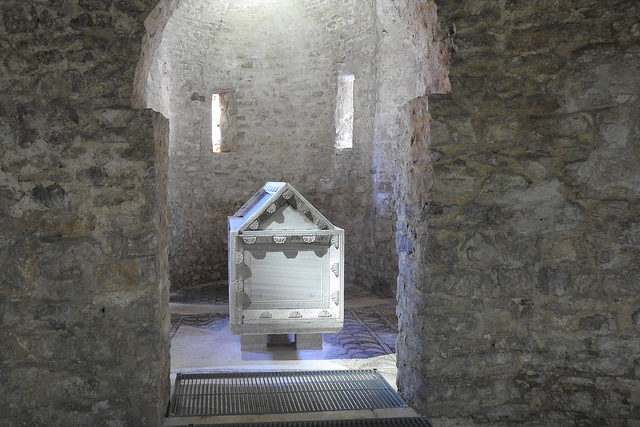
The only surviving depiction of the Mother of God in an early-Christian western basilica is placed on the vault over the apse.
The mosaic represents Mary and Child, sitting on the Heavenly throne, under a wreath held by a hand which is a symbol of God.
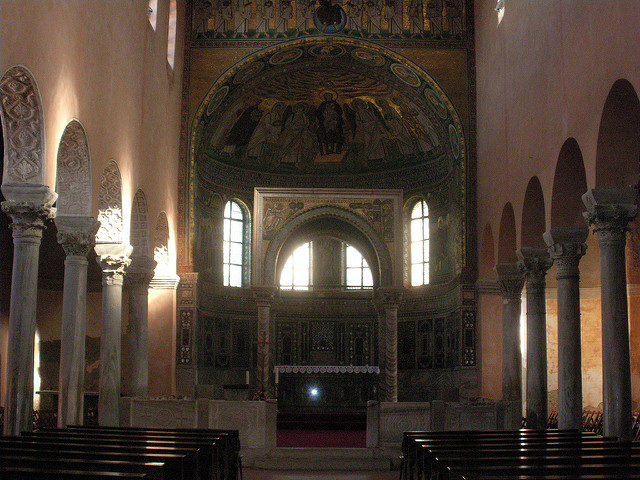
The canopy at the basilica was modified in 1267 and is carried by four marble columns that belonged to the previous sixth-century ciborium.
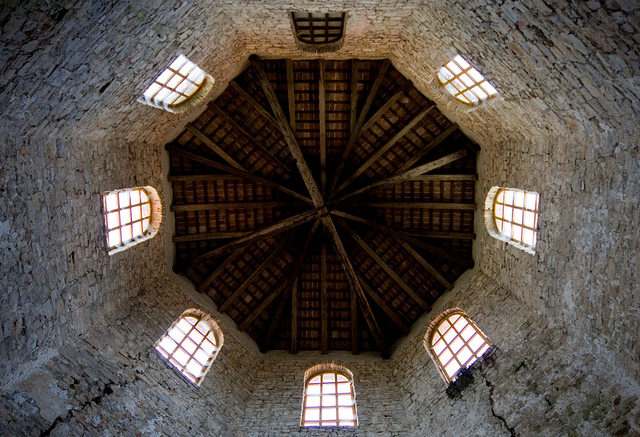
After an earthquake in 1440, the southern wall of the central nave of the basilica was entirely restored and in the place of the windows other windows were built in Gothic style.
In 1997, the Euphrasian complex, because of its exceptional value, has been added onto the UNESCO Wolrd Heritage List.
